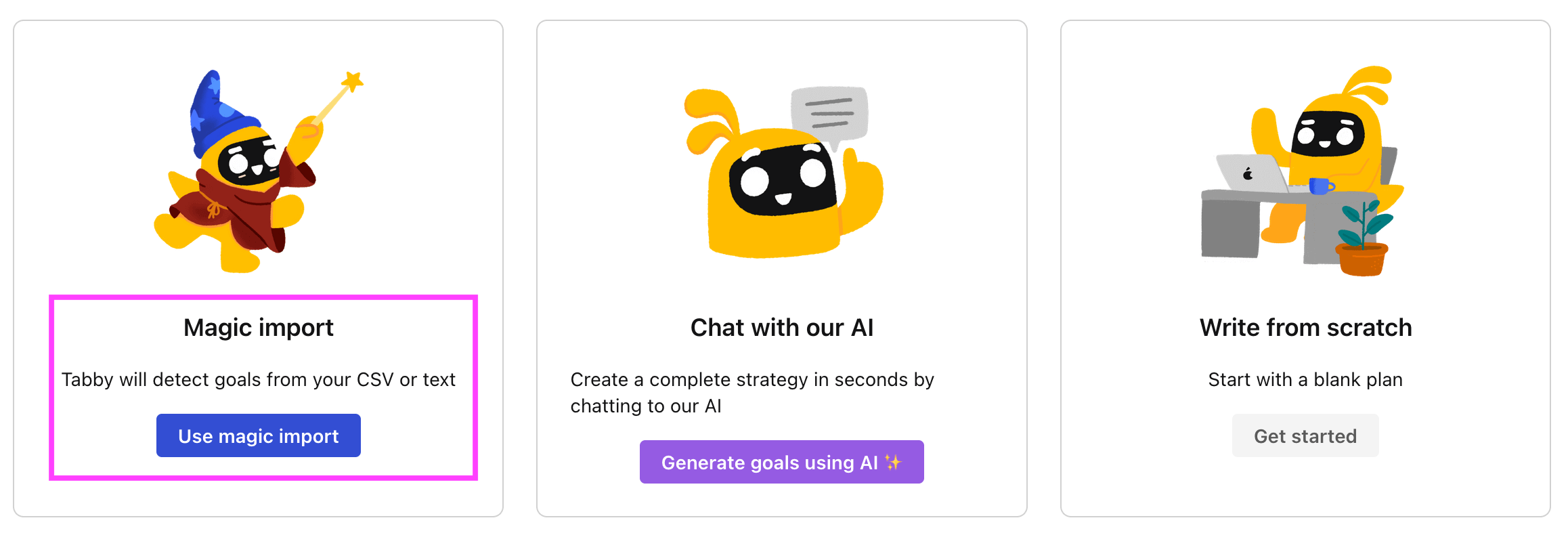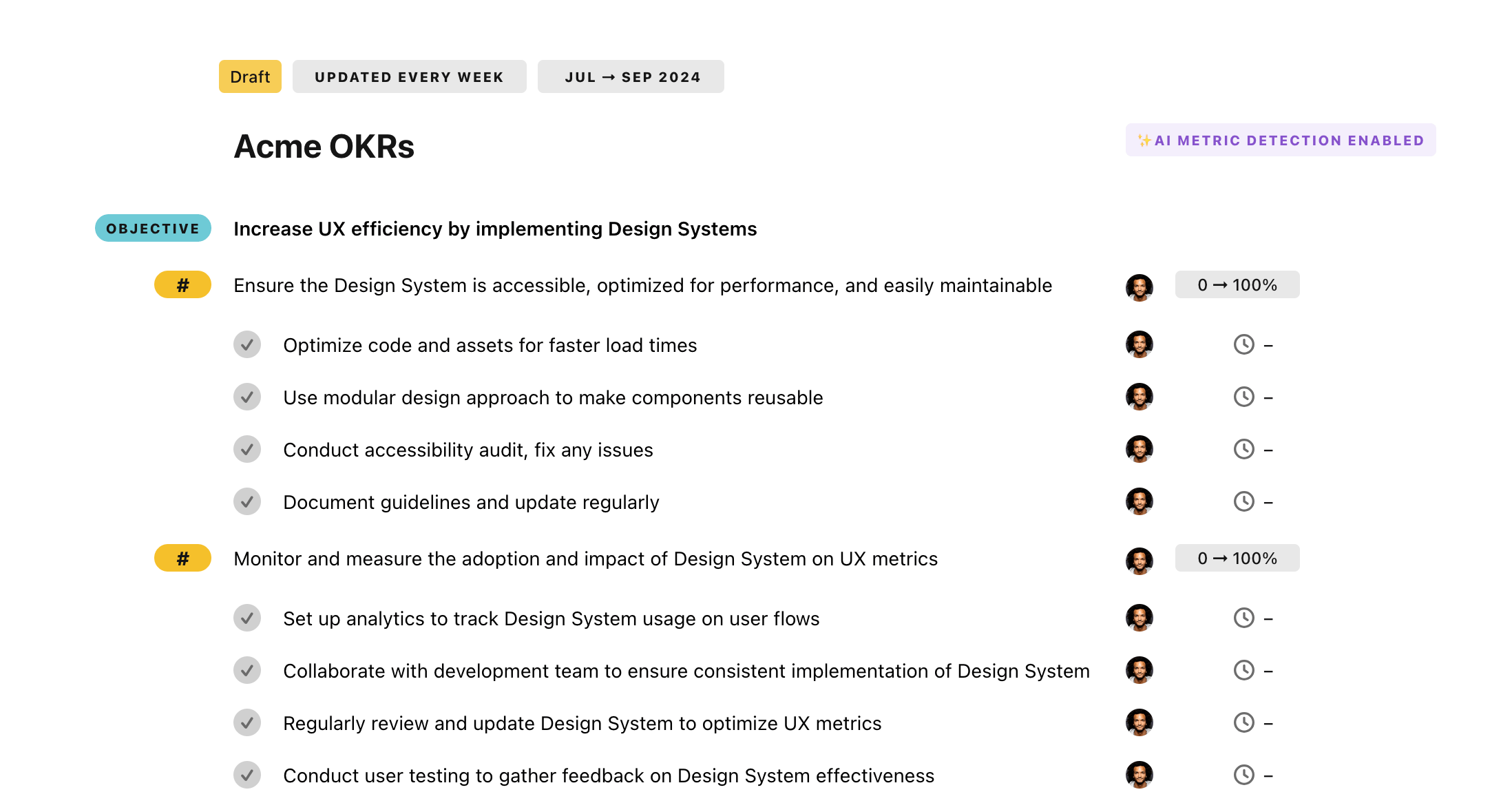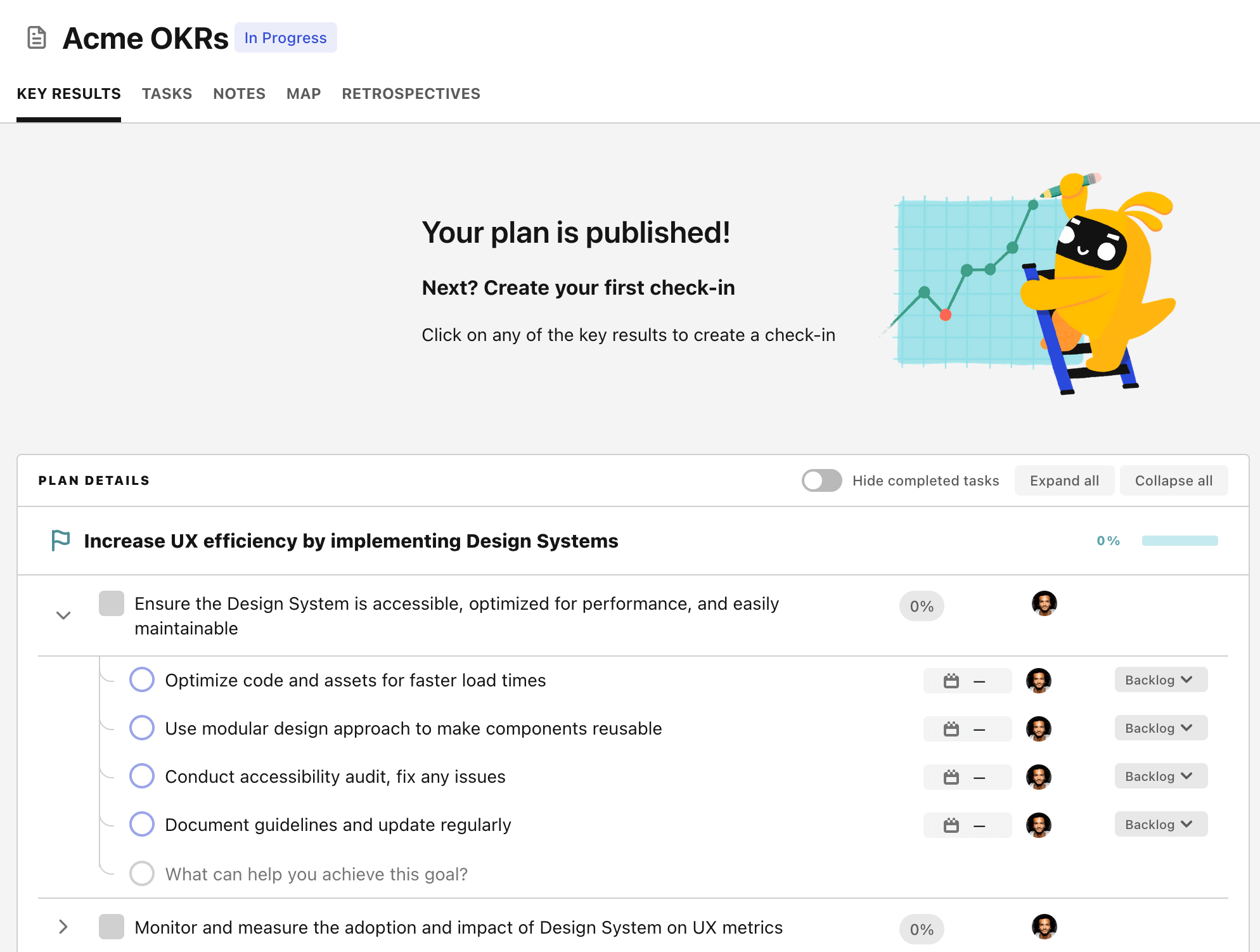OKR template to improve client response time significantly
Your OKR template
The initial objective aims to find a useful training program for quick response tactics and then regularly train the team members. The focus is on monitoring progress and addressing any deficiencies to ensure optimal team readiness and efficacy.
Next involves the integration of a new customer service software. The tasks require investigating and selecting an appropriate system, fitting it into the existing programming, and training staff on how to use this new software. It's geared towards streamlining client interaction and raising efficiency.
The last target centers on reducing the average response time by 25%. Solutions to achieving this include incorporating a software that automates responses for everyday queries and refining the query handling process. Additionally, equipping staff with the knowledge for fast and effective responses is also an initiative.
ObjectiveImprove client response time significantly
KRSuccessfully train 95% of the team on effective fast-response techniques
Identify appropriate fast-response techniques training program
Schedule routine training sessions for team members
Monitor team's progress and address inadequacies
KRImplement new customer service software to streamline client communication
Research and select suitable customer service software
Integrate the software into existing systems
Train staff members on new software usage
KRReduce average response time to client queries by 25%
Implement auto-response software for common queries
Streamline query handling process to improve efficiency
Train staff on swift and effective responses
How to edit and track OKRs with Tability
You'll probably want to edit the examples in this post, and Tability is the perfect tool for it.
Tability is an AI-powered platform that helps teams set better goals, monitor execution, and get help to achieve their objectives faster.
With Tability you can:
- Use AI to draft a complete set of OKRs in seconds
- Connect your OKRs and team goals to your project
- Automate reporting with integrations and built-in dashboard
Instead of having to copy the content of the OKR examples in a doc or spreadsheet, you can use Tability’s magic importer to start using any of the examples in this page.
The import process can be done in seconds, allowing you to edit OKRs directly in a platform that knows how to manage and track goals.
Step 1. Sign up for a free Tability account
Go tohttps://tability.app/signup and create your account (it's free!)
Step 2. Create a plan
Follow the steps after your onboarding to create your first plan, you should get to a page that looks like the picture below.

Step 3. Use the magic importer
Click on Use magic import to open up the Magic Import modal.
Now, go back to the OKR examples, and click on Copy on the example that you’d like to use.

Paste the content in the text import section. Don’t worry about the formatting, Tability’s AI will be able to parse it!

Now, just click on Import from text and let the magic happen.

Once your example is in the plan editor, you will be able to:
- Edit the objectives, key results, and tasks
- Click on the target 0 → 100% to set better target
- Use the tips and the AI to refine your goals
Step 4. Publish your plan
Once you’re done editing, you can publish your plan to switch to the goal-tracking mode.

From there you will have access to all the features that will help you and your team save hours with OKR reporting.
- 10+ built-in dashboards to visualise progress on your goals
- Weekly reminders, data connectors, and smart notifications
- 9 views to map OKRs to strategic projects
- Strategy map to align teams at scale